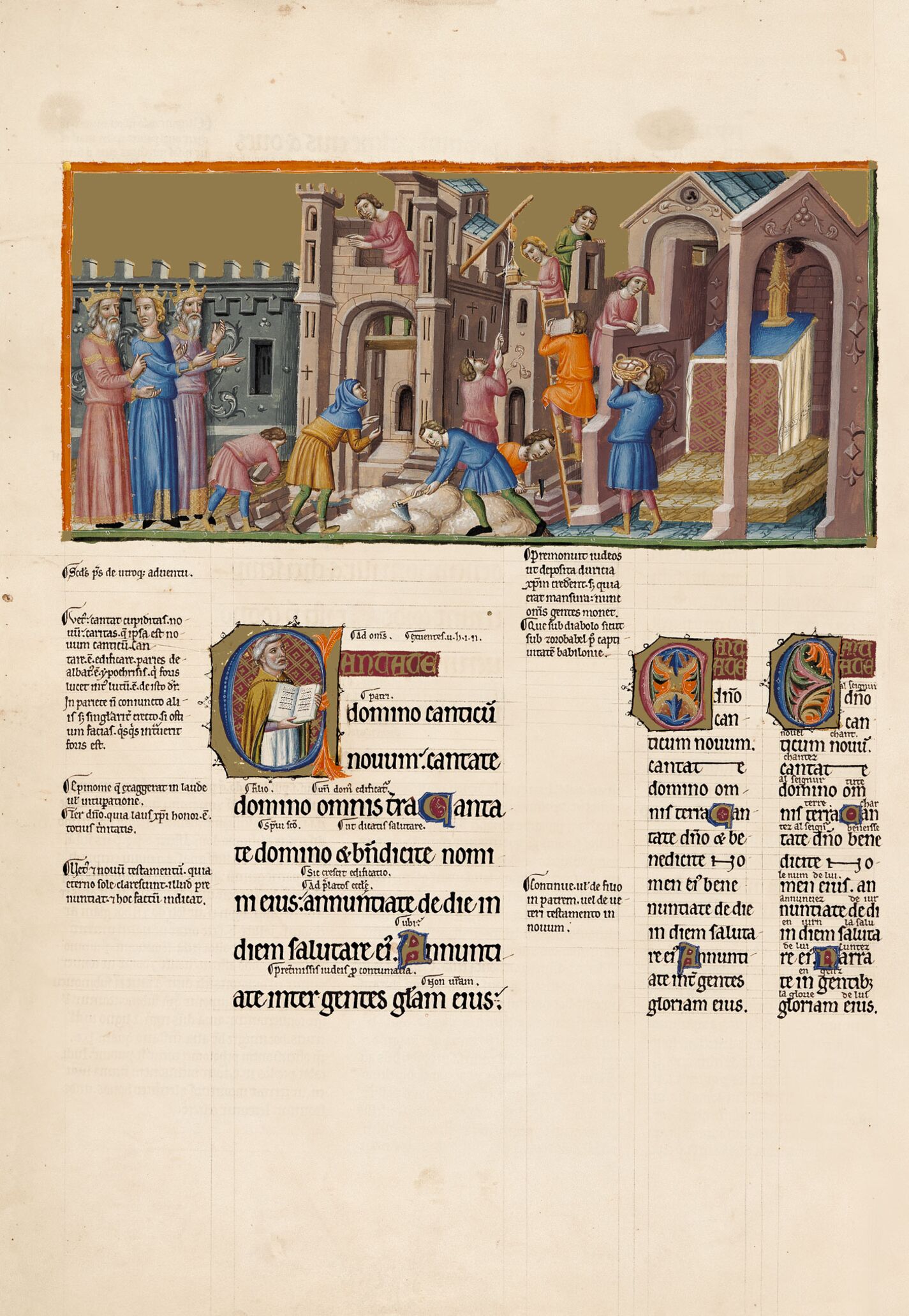The psalm introduces the theme of the building of the temple, mentioned in the title, by the opening verses praising God. This is followed by an exhortation to sing, asking for the glory of God and the marvels stemming from it to be announced to everyone. The large, single image depicting these contents shows the construction of a fortified city and its main temple, situated on one of its sides (v. 6, Confessio, et pulchritudo in conspectu ejus: sanctimonia, et magnificentia in sanctifictione ejus // Praise and beauty are before him: holiness and majesty in his sanctuary). The basic aspects of the architectural design employed throughout the book are repeated here but now, far more activity is shown in the city. The temple, whose nave is as yet roofless, shows the space where the altar and tabernacle are situated, echoing their importance and necessary utility. The labourers work unceasingly, providing a vision of the tasks and division of work used by medieval builders. Three kings – two old monarchs and another much younger one – are not involved in any of the work involving pulleys, ladders, baskets, mattocks, bricks and mortar. The kings in dialogue and gesticulating with their hands may represent the peoples of the earth to whom God announces his marvels in this psalm (v. 10, Dicite in gentibus, quia Dominus regnavit // Say ye among the Gentiles, the Lord hath reigned). After captivity, the temple and the city are rebuilt (Ezr. 3-4).

The psalm introduces the theme of the building of the temple, mentioned in the title, by the opening verses praising God. This is followed by an exhortation to sing, asking for the glory of God and the marvels stemming from it to be announced to everyone. The large, single image depicting these contents shows the construction of a fortified city and its main temple, situated on one of its sides (v. 6, Confessio, et pulchritudo in conspectu ejus: sanctimonia, et magnificentia in sanctifictione ejus // Praise and beauty are before him: holiness and majesty in his sanctuary). The basic aspects of the architectural design employed throughout the book are repeated here but now, far more activity is shown in the city. The temple, whose nave is as yet roofless, shows the space where the altar and tabernacle are situated, echoing their importance and necessary utility. The labourers work unceasingly, providing a vision of the tasks and division of work used by medieval builders. Three kings – two old monarchs and another much younger one – are not involved in any of the work involving pulleys, ladders, baskets, mattocks, bricks and mortar. The kings in dialogue and gesticulating with their hands may represent the peoples of the earth to whom God announces his marvels in this psalm (v. 10, Dicite in gentibus, quia Dominus regnavit // Say ye among the Gentiles, the Lord hath reigned). After captivity, the temple and the city are rebuilt (Ezr. 3-4).